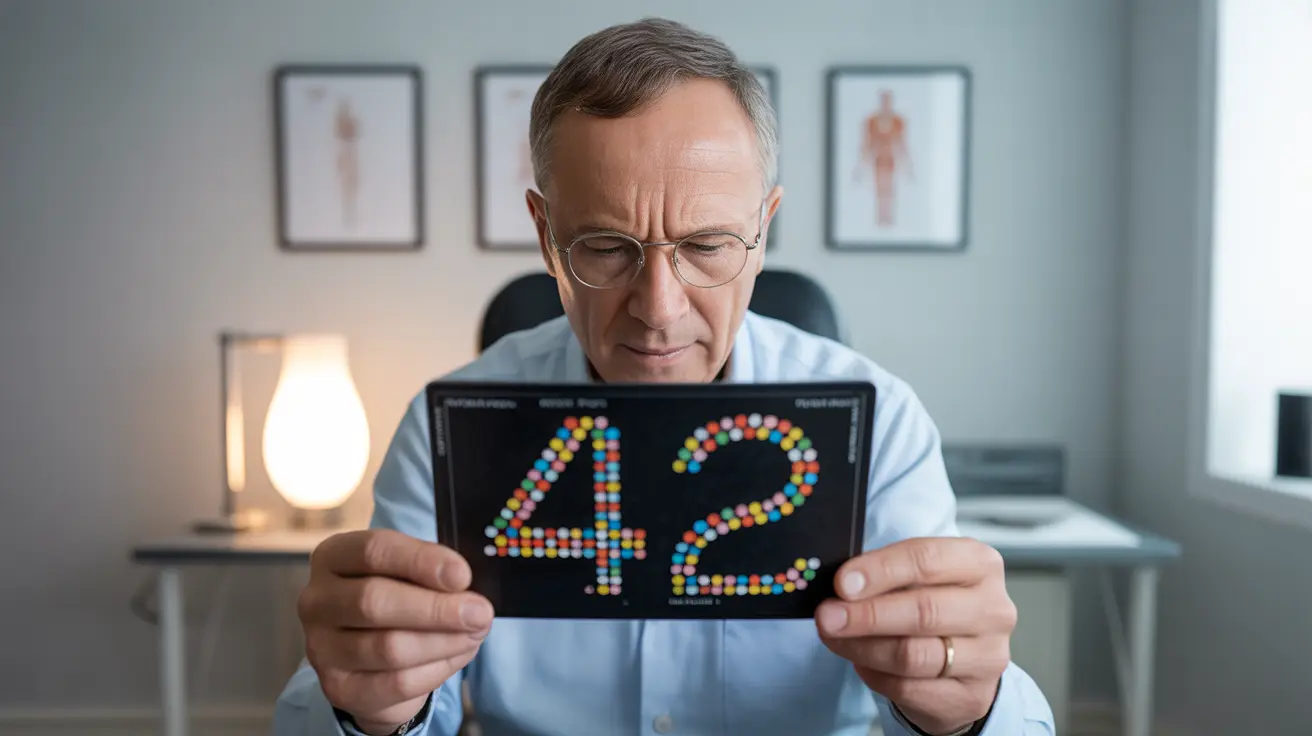Color vision testing is a crucial component of comprehensive eye health assessment that helps identify color vision deficiencies and ensures proper diagnosis of various eye conditions. These specialized examinations evaluate how well you can distinguish between different colors and detect any abnormalities in color perception that might affect your daily life or career choices.
Whether you're applying for a job that requires accurate color discrimination or experiencing changes in your color vision, understanding these tests is essential for maintaining optimal visual health and making informed decisions about your eye care.
What Is a Color Vision Test?
A color vision test is a standardized examination designed to evaluate your ability to perceive and distinguish between different colors. These tests can identify various types of color vision deficiencies, from mild color weakness to complete color blindness (achromatopsia). The results help healthcare providers determine whether you have normal color vision or if you experience difficulties with specific color combinations.
Common Types of Color Vision Tests
Ishihara Color Test
The Ishihara test is the most widely used color vision screening tool worldwide. It consists of a series of circular plates containing dots of various colors, sizes, and brightness levels that form numbers or patterns. People with normal color vision can easily identify these patterns, while those with color vision deficiencies may see different numbers or no pattern at all.
Farnsworth-Munsell 100 Hue Test
This more comprehensive test involves arranging colored caps in specific order based on hue. It's particularly useful for detecting subtle color vision deficiencies and is often used in industries where precise color discrimination is crucial.
Cambridge Colour Test
A computerized assessment that uses advanced technology to measure color discrimination thresholds. This test is particularly valuable for research purposes and detailed clinical evaluations.
The Testing Process
During a color vision test, you can expect the following:
- Comfortable seating in a well-lit room
- Proper positioning of test materials at a specific distance
- Clear instructions from your healthcare provider
- Multiple viewing opportunities for each test plate or segment
- Documentation of your responses and results
When to Get Tested
Color vision testing is recommended in several situations:
- During routine childhood eye examinations
- Before starting careers requiring accurate color vision
- When experiencing changes in color perception
- Following certain eye injuries or conditions
- As part of occupational health screenings
Impact on Daily Life and Career
Color vision deficiencies can affect various aspects of life, including:
- Career choices in fields like aviation, electrical work, or graphic design
- Traffic signal recognition
- Color-coded information interpretation
- Fashion and interior design decisions
- Educational activities involving color-based learning
Frequently Asked Questions
What is a color vision test and why is it important?
A color vision test is a diagnostic tool that evaluates your ability to distinguish between different colors. It's important because it helps identify color vision deficiencies that could affect daily activities, career choices, and safety-related tasks like driving.
How do doctors perform a color vision test and what can I expect during the exam?
Doctors typically use standardized color plates or digital tests in a well-lit room. You'll be asked to identify numbers, patterns, or arrange colored objects. The exam is painless, non-invasive, and usually takes about 10-15 minutes to complete.
What are the different types of color vision tests and which one is most common?
The most common test is the Ishihara color test, which uses plates with colored dot patterns. Other types include the Farnsworth-Munsell 100 Hue Test and the Cambridge Colour Test. The Ishihara test is most widely used due to its accuracy and ease of administration.
Can color vision deficiency be treated or improved after diagnosis?
While most color vision deficiencies are inherited and cannot be cured, special tinted lenses or color vision apps can help manage the condition. Some acquired color vision problems may improve if the underlying cause is treated.
Who should get a color vision test and how can it affect daily life or work?
Children during routine eye exams, job applicants for color-critical positions, and anyone experiencing changes in color perception should get tested. Color vision deficiencies can impact career choices, daily activities, and safety-related tasks, making early detection crucial for appropriate life planning and accommodations.




